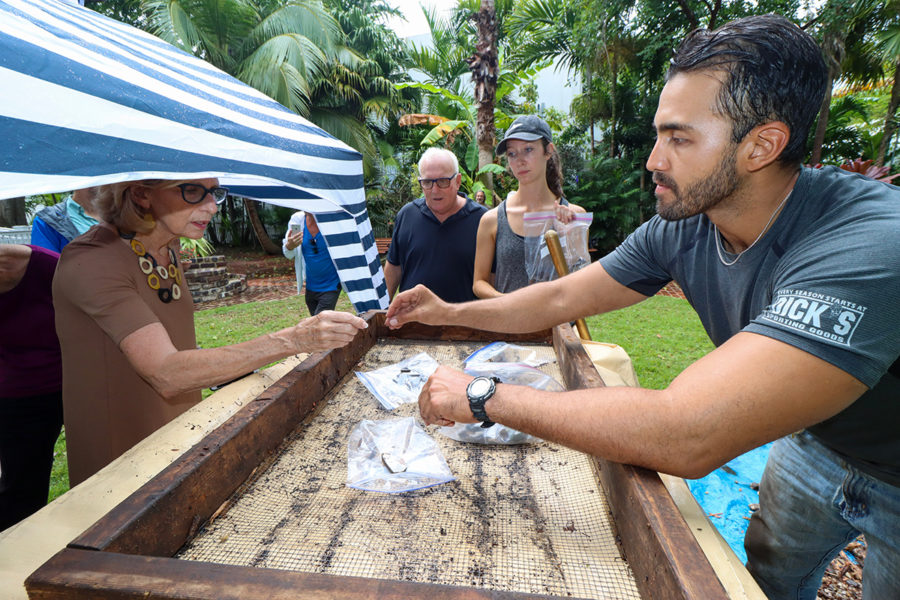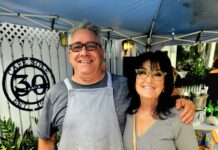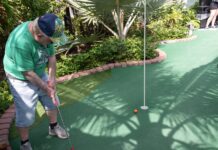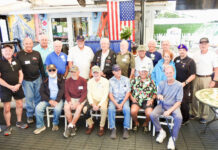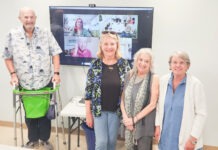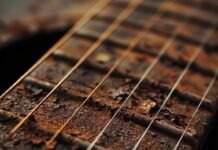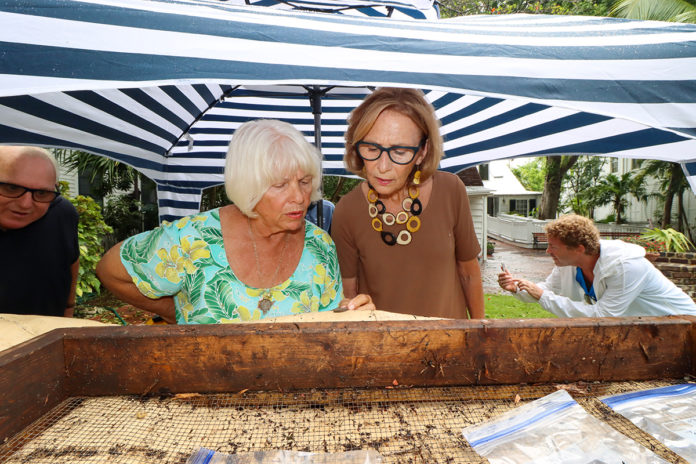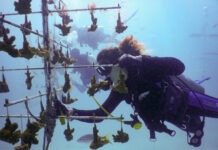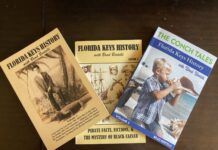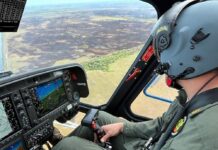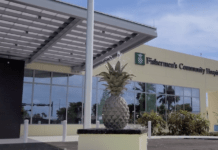Digging a 2-foot hole in one’s backyard usually wouldn’t warrant a team of student archaeologists from the University of Miami. But then, most backyards don’t date back to 1829 — and they don’t conceal centuries-old dishes, tools, cooking instruments and other common household items that provide a glimpse into Key West’s past and the lives of those who called it home.
Key West’s Oldest House, 322 Duval St., built in 1829, is now a museum and headquarters of the Old Island Restoration Foundation, which operates the house for the state of Florida, which owns the historical resource.
University of Miami anthropology professor Monica Faraldo brought a small team of students to the house on July 10-11 for a preliminary excavation of the large backyard behind the Oldest House.
“This was a preliminary dig, so we dug test holes, just to ensure that there was something to find,” said Tom Greenwood, a historical consultant for the Oldest House who worked with Faraldo 20 years ago, when she did the same excavation on the Audubon House grounds.

The artifacts found there led to the creation of a new exhibit that recreated the outdoor cook houses that were common in Key West in the 1800s, when the oppressive heat and lack of air-conditioning would have made indoor kitchens, with their open fires, unbearably hot.
“After such an exciting and successful project at the Audubon House, here we are 20 years later doing it again at the Oldest House,” Greenwood said. “It’s really eye-opening to discover tangible, real-life objects that were used by real people so long ago.”
The test pits proved quite productive, with the unearthing of numerous early to mid-19th-century pottery and china shards, he said.

“Some of them are a very similar blue and white pattern to what was found during the Audubon House dig. These clues show us the economic status and lifestyle accoutrements of the first American settlers in Key West in the 1820s and ’30s,” Greenwood said.
The goal is to match the recovered shards to actual intact antique objects. Those items can be added to the Oldest House’s interior.
“For example, we’d love to set the dining room table in the same way the American settlers in Key West did,” Greenwood said. “We are also planning to restore the interior rooms and furnishings back to their original 19th-century splendor, with period furniture and textiles.”
Greenwood and Faraldo will seek approval from the state to conduct a full excavation of the backyard next month.
Stay tuned, Greenwood said.
